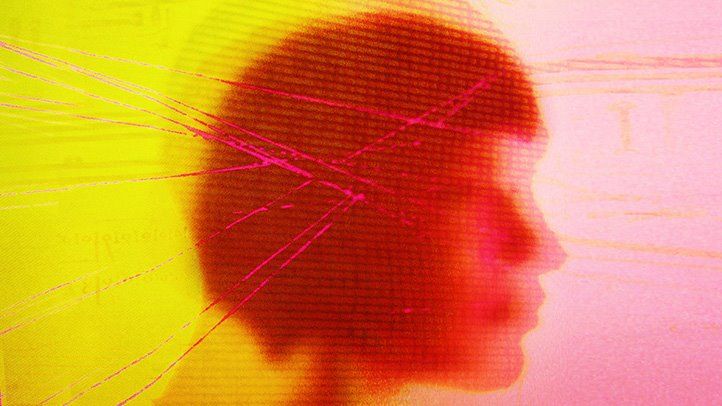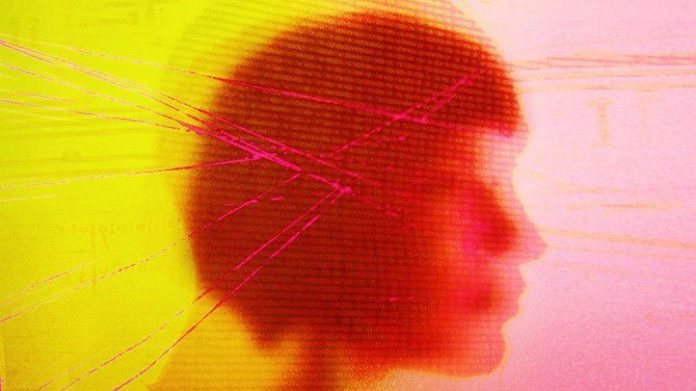Agoraphobia is an anxiety disorder characterized by an intense fear about any place or situation from which escape might be difficult, or where help might not be available if a problem occurs.
People with agoraphobia often fear helplessness in situations in which strong anxiety, panic, or embarrassment can develop, and typically don't feel comfortable or safe in public places — especially places that are crowded.
This fear may eventually cause a person with agoraphobia to want to stay at home, indoors, at all times. If they do leave the house, they may always need to have one particular person accompanying them.
In ancient Greece, “agora” meant “the marketplace,” so agoraphobia is the term used to name the fear of being in a large, open, public space.
Causes and Risk Factors of Agoraphobia
As with other anxiety disorders, it's not clear what causes people to develop agoraphobia.
Several factors may make some people more likely to develop the condition, such as:
- Genetics Agoraphobia and other anxiety disorders sometimes run in families. Some of this relationship could be learned behavior but some may be related to genetics. (2)
- Brain structure Differences in the areas of the brain that regulate fear and anxiety may contribute to the condition, notes the NHS. (4)
- Traumatic events Physical or sexual trauma during childhood can play a role as well. (4)
Duration of Agoraphobia
Without early interventions, agoraphobia can become more severe and more difficult to treat. (1) But effective treatment can help you function with agoraphobia. Cognitive behavioral therapy (CBT), a form of psychotherapy, typically consists of 10 to 20 sessions with a therapist over the course of several weeks. (1)
Treatment and Medication Options for Agoraphobia
Agoraphobia and other anxiety disorders are generally treated with psychotherapy, such as CBT. Medications, such as certain antidepressants, are sometimes used in severe cases or when there is another mental health condition accompanying the agoraphobia.
CBT — which is used for a variety of psychological disorders — helps people identify, understand, and change the thoughts and behaviors that contribute to their condition. It's thought that this therapy may be more cost-effective in the long run, and better tolerated, than medication. Experts sometimes say that CBT can take 10 to 20 sessions to work — but it may also take longer.


Exposure Therapy: A Surprisingly Effective Treatment for Depression
One type of CBT is called exposure therapy. Exposure therapy is often used to treat certain phobias. It involves gradually exposing you to a feared situation or object, causing you to become less fearful over time, according to the Mayo Clinic. (7)
You may also be able to receive CBT over the phone or online from a licensed therapist. Research on the efficacy of therapy administered through the internet is still early, but some studies suggest it may be just as helpful as going into your therapist's office, according to an article published in January 2018 in Expert Review of Therapeutics. (8)
If you have other, related disorders in addition to agoraphobia, or are not getting completely better with therapy, your doctor may also prescribe antidepressants to help treat the condition as well as panic symptoms.
The kind of antidepressants that are most often prescribed are selective serotonin reuptake inhibitors, or SSRIs. These drugs help make serotonin become more available to the brain.
Examples of SSRIs include:
- Prozac or Sarafem (fluoxetine)
- Celexa (citalopram)
- Zoloft (sertraline)
- Paxil, Paxeva, or Brisdelle (paroxetine)
- Lexapro (escitalopram)
Anti-anxiety medications called benzodiazepines may also be prescribed, though the use of these drugs for agoraphobia is controversial. Some believe they are good short-term tools for people whose symptoms are so severe that they cannot carry out simple functions, such as leaving their homes; others note that the use of these medications can interfere with therapy, which relies on a person experiencing some discomfort and working through it.
Some commonly used benzodiazepines are:
- Klonopin (clonazepam)
- Xanax (alprazolam)
Benzodiazepines help relieve anxiety by enhancing the activity of a neurotransmitter in the brain and generating a sedative effect. They work quickly — often within one hour or several hours.
Because they work so quickly, and because people taking them can build up a tolerance that leaves them needing higher doses to feel better, people can become addicted to them. So doctors will prescribe them for very short periods of time. (7)
If you stop taking them suddenly, withdrawal symptoms may occur, so it's important to follow your doctor's instructions for tapering off your medication.
Prevention of Agoraphobia
According to the National Institutes of Health (NIH), early treatment of agoraphobia symptoms may prevent the disorder from developing. (1)
If you recognize mild early signs or behaviors, you may able to act before the fear becomes overwhelming. For instance, if you start to feel anxious about feeling safe in a place where any actual risk of harm is low, you might face and reduce those fears by going to that place repeatedly, suggests the Mayo Clinic. (3)
Research and Statistics: Who Has Agoraphobia?
Because agoraphobia has only become a formal diagnosis relatively recently (previously being considered an aspect of panic disorder), the data vary on how prevalent it is. The fifth edition of the Diagnostic and Statistical Manual of Mental Disorders (DSM-V), which classified agoraphobia as its own diagnosis, notes that approximately 1.7 percent of the population has agoraphobia. (9)
According to the National Institute of Mental Health (NIMH), the lifetime prevalence is 1.3 percent. The NIMH reports that 0.9 percent of the adult population in the United States experiences agoraphobia in a given year. (10)
Among adults with agoraphobia in the past year, notes the NIH, an estimated 40.6 percent were seriously impaired by agoraphobia. Impairment was moderate for 30.7 percent had moderate impairment, and 28.7 percent. (10)
The mean age of diagnosis of agoraphobia is in the mid-to-late twenties. (9) And women are diagnosed with it more frequently than men. (3)
Related Conditions and Causes of Agoraphobia
Agoraphobia is often associated with panic disorder, an anxiety disorder in which a person experiences recurrent panic attacks. These attacks are intense, sudden bouts of fear or terror that develop when no actual danger is present.
According to the Cleveland Clinic, an estimated 1 in 3 people with panic disorder develop agoraphobia. (13)
People with panic disorder often live in fear of having a panic attack, which leads them to avoid certain places or situations. Some people with panic disorder, fearing the physical sensations of panic, may try to avoid all situations that could cause an attack, leading to agoraphobia.
According to researchers, panic disorder with agoraphobia tends to be chronic, while panic disorder without agoraphobia tends to come and go in phases. (14) Experts have also noted that panic disorder with agoraphobia often coexists with obsessive compulsive disorder (OCD), per a study published in April 2014 in Comprehensive Psychiatry. (15)
It's possible to have agoraphobia without experiencing full-blown panic attacks. You may experience feelings of fear or anxiety, but these won’t progress into a panic attack. This condition is sometimes called primary agoraphobia.
Resources We Love
National Alliance on Mental Illness (NAMI)
NAMI is the nation's "largest grassroots mental health organization," dedicated to advocacy, education, and support for people affected by mental illness. Their website offers guidance and community for individuals with mental illness as well as for family and caregivers, as well as personal stories. You can search for a local affiliate online.
Anxiety and Depression Association of America (ADAA)
This international nonprofit works to promote the prevention and treatment of anxiety, depression, OCD, PTSD, and co-occurring disorders, such as panic disorder and agoraphobia. The comprehensive info on their site includes specific resources for panic disorder. The ADAA also has an online support group where you can connect with others who understand what you're going through.
The Mighty
This digital health community provides support and connection for over two million people with mental health challenges. You can join the agoraphobia group to post thoughts and experiences or to ask questions.
Additional reporting by Carlene Bauer.
Editorial Sources and Fact-Checking
- Agoraphobia. MedlinePlus. March 26, 2018.
- Symptoms — Phobias. NHS. October 26, 2018.
- Agoraphobia: Overview. Mayo Clinic. November 18, 2017.
- Agoraphobia — Causes. NHS. December 18, 2018.
- What Are Anxiety Disorders? American Psychiatric Association. January 2017.
- Agoraphobia: Outlook/Prognosis. Cleveland Clinic. May 8, 2015.
- Agoraphobia: Diagnosis and Treatment. Mayo Clinic. November 18, 2017.
- Andersson G, Rozental A, Shafran R, Carlbring P. Long-Term Effects of Internet-Supported Cognitive Behaviour Therapy. Expert Review of Neurotherapeutics. January 2018.
- Agoraphobia. StatPearls. March 31, 2020.
- Agoraphobia: Prevalence of Agoraphobia Among Adults. National Institute of Mental Health. November 2017.
- Cassiday K. Finding Calm in the Covid-19 Storm When You Have Panic Attacks and Agoraphobia. Anxiety and Depression Association of America.
- How to Tell The Difference Between Agoraphobia and Coronavirus Anxiety. Cleveland Clinic. June 25, 2020.
- Agoraphobia. Cleveland Clinic. May 8, 2015.
- Francis J, Weisberg R, et al. Characteristics and Course of Panic Disorder and Panic Disorder with Agoraphobia in Primary Care Patients. The Primary Care Companion to the Journal of Clinical Psychology. 2007.
- Torres A, Ferrão Y, Shavitt RG, et al. Panic Disorder and Agoraphobia in OCD Patients: Clinical Profile and Possible Treatment Implications. Comprehensive Psychiatry. April 2014.
Sources
- Agoraphobia. Science Direct.
- Answers to Your Questions About Panic Disorder. American Psychological Association.
- Bressert S. Agoraphobia Symptoms. PsychCentral.
- Interview With Ken Duckworth. January 4, 2018.
- Panic Disorder. Anxiety and Depression Association of America.
- Wittchen HU, Nocon A, Beesdo K, et al. Agoraphobia and Panic. Psychotherapy and Psychosomatics. 2008.













































